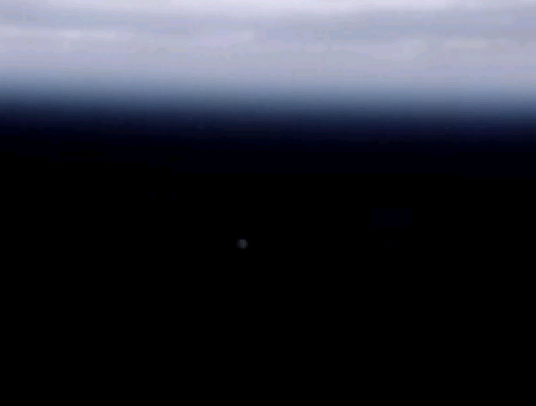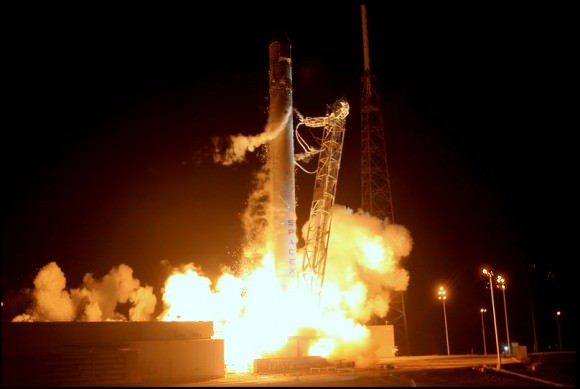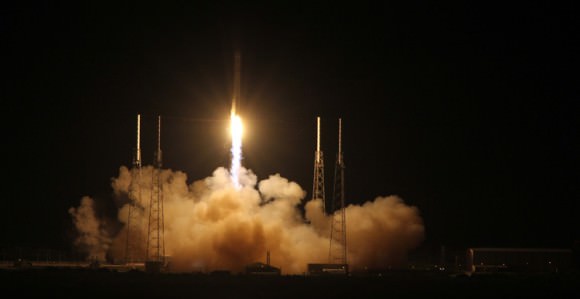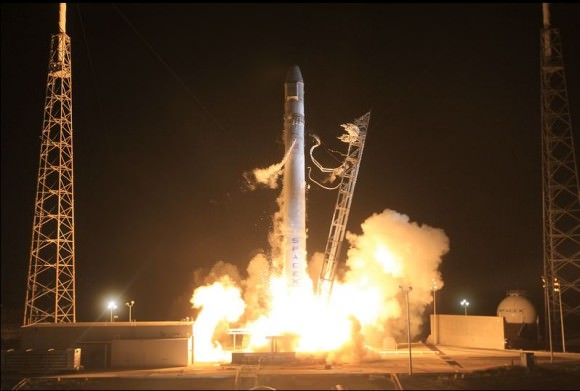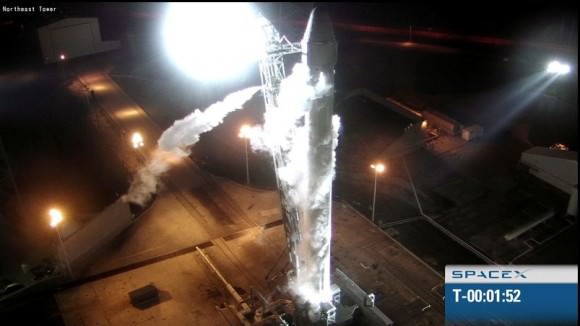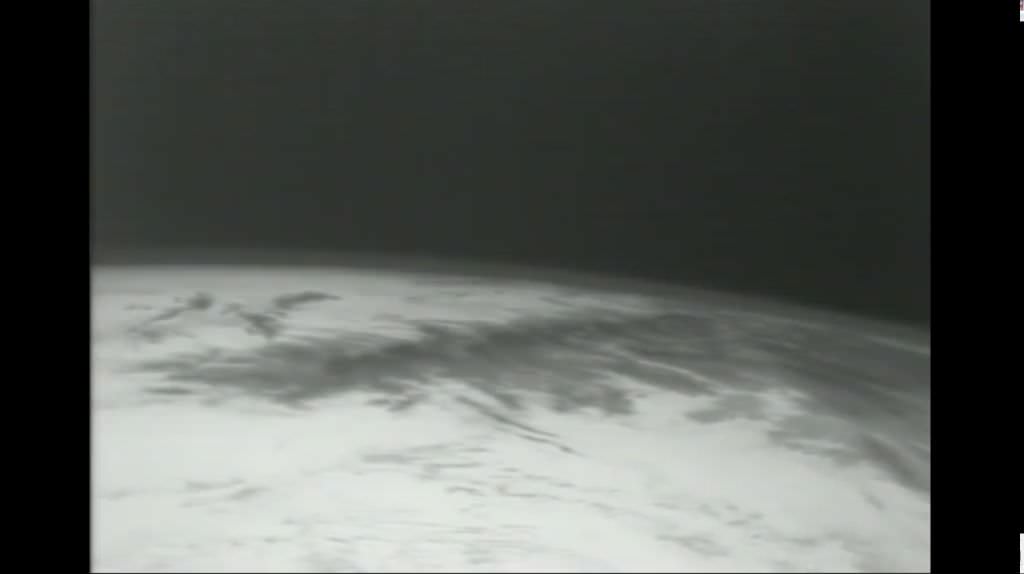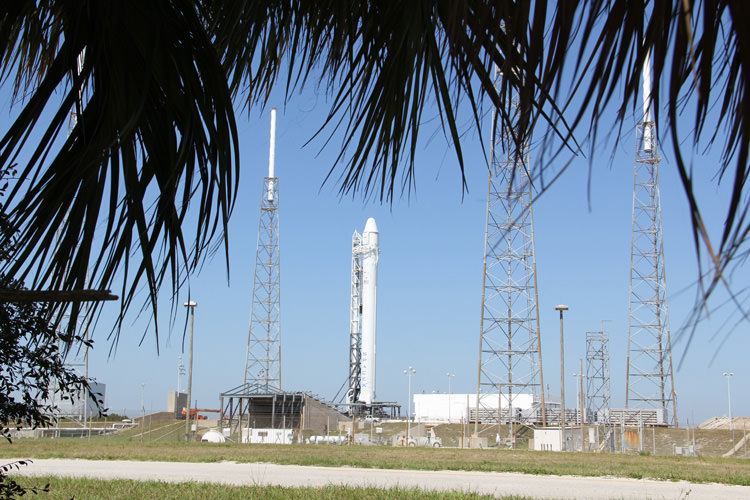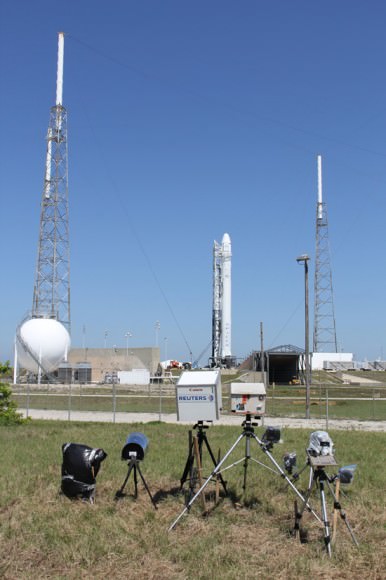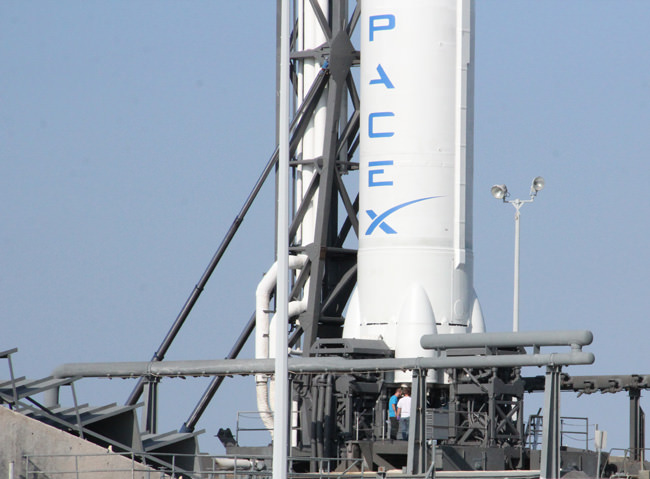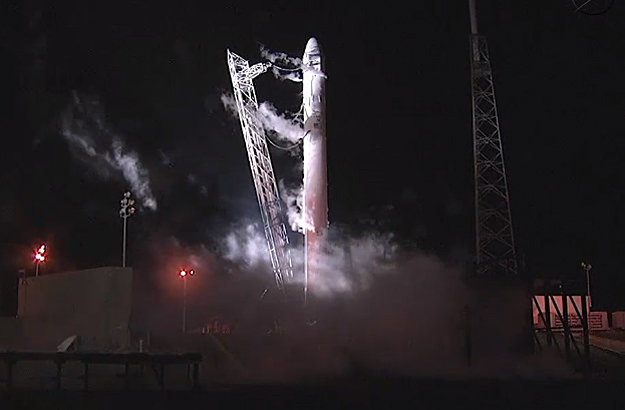Early today, SpaceX’s Dragon capsule successfully flew near the International Space Station and completed two big tests of its in-space capabilities, all critical tests for tomorrow’s big event: the first berthing of a commercial spacecraft to the ISS. As Dragon approached, astronaut Don Pettit spied the spacecraft first. “I think I can see it now,” he said, and Mission Control in Houston radioed back, “Copy that. Tally ho Dragon!”
With the successes today, NASA has given SpaceX a “go” for berthing activities on Friday, May 25.
[/caption]
Dragon initially appeared as a spot of light against the blackness of space, and later the outline of the capsule and its solar arrays became visible. It came within 2.4 km from the ISS.
Dragon communicated with the ISS and demonstrated its relative GPS, and the astronauts on the ISS successfully communicated back with Dragon by turning on its outside strobe light. The vehicle demonstrated both a pulsed and a full abort, as well as free drift, floating freely in orbit as it will when grappled by the space station’s robotic arm. And its proximity operations sensors and SpaceX’s COTS UHF Communication Unit (CUCU) all worked well during tests today.
Finally, Dragon completed a final height adjustment burn at 12:09 UTC/7:09 a.m. CDT to depart the close vicinity of the Space Station, and then began a “racetrack” trajectory to re-approach the station for grapple and berthing attempts on Friday.
“It went very close to how we had trained for it,” said ISS Flight Director Holly Ridings at a press briefing following Dragon’s maneuvers. The only glitch was a computer monitor on the space station that froze and had to be re-booted.
“Right now our mission is looking just like our simulations,” said John Couluris from SpaceX, lead mission director for the COTS 2 flight. “Today was a big confidence boost. It’s exciting being an American and putting an American spacecraft into orbit.”
Friday’s berthing will be the big test, as Dragon will do a series of burns to bring it closer to the ISS. As Dragon flies around the ISS, there are several decision points where NASA and SpaceX will check the health of the spacecraft. Each point has a “go” sequence if all is going well. When Dragon is about 10 meters away from the Station, all conditions will be assessed in order to give the final “go” for berthing. Both vehicles will be put in free drift so that no thrusters fire, and Kuipers and Pettit will use the Space Station’s Canadarm2 to grab the Dragon and berth it to the complex. Once attached, the crew will have a week to unload the supplies and then put contents in that is scheduled to return to Earth.
Dragon is the only cargo ship designed to return to Earth with experiments and equipment; others ships such as the Russian Progress, the European ATV and the Japanese HTV all burn up in the atmosphere. The Russian Soyuz crew craft can bring home limited equipment.
The initial maneuvers will start at about 06:00 UTC on May 25 (1 am CDT), with capture now scheduled for 12:00 UTC/7 am CDT, and berthing scheduled for about 15:30 UTC/10:30 am CDT. “The timing may move back or forth depending on how much time we need to evaluate the spacecraft as it sits below station in that R-bar location,” said Ridings.
Dragon is the first US-made ship to come to the ISS since about a year ago when the last space shuttle flew.

